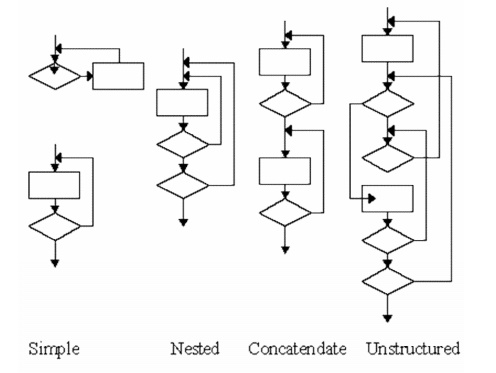Chapter: Software Engineering : Testing and Implementation
Control Structure Testing
Control Structure Testing
Control structure testing is
a group of white-box testing methods.
·
Branch Testing
·
Condition Testing
·
Data Flow Testing
·
Loop Testing
1. Branch Testing
·
also called Decision Testing
·
definition: "For every decision, each branch needs to be
executed at least once."
·
shortcoming - ignores implicit paths that result from compound
conditionals.
·
Treats a compound conditional as a single statement. (We count each
branch taken out of the decision, regardless which condition lead to the
branch.)
·
This example has two branches to be executed:
IF ( a equals b) THEN
statement 1
ELSE statement 2
END IF
·
This examples also has just two branches to be executed, despite
the compound conditional:
IF ( a equals b AND c less
than d ) THEN statement 1
ELSE statement 2
END IF
·
This example has four branches to be executed:
IF ( a equals b) THEN
statement 1
ELSE
IF ( c equals d) THEN
statement 2
ELSE statement 3
END IF
END IF
·
Obvious decision statements are if, for, while, switch.
·
Subtle decisions are return boolean
expression, ternary expressions, try-catch.
·
For this course you don't need to write test cases for IOException
and OutOfMemory exception.
·
See this problem and solution.
2.Condition Testing
Condition testing is a test
construction method that focuses on exercising the logical conditions in a
program module.
Errors in conditions can be
due to:
·
Boolean operator error
·
Boolean variable error
·
Boolean parenthesis error
·
Relational operator error
·
Arithmetic expression error
definition: "For a
compound condition C, the true and false branches of C and every simple condition in C need to be executed at least
once."
Multiple-condition testing requires that all true-false combinations of simple conditions be exercised at least once. Therefore, all statements,
branches, and conditions are necessarily covered.
3. Data Flow Testing
Selects test paths according
to the location of definitions and use of variables. This is a somewhat
sophisticated technique and is not practical for extensive use. Its use should
be targeted to modules with nested if and loop statements.
4. Loop Testing
Loops are fundamental to many
algorithms and need thorough testing.
There are four different
classes of loops: simple, concatenated, nested, and unstructured.
Examples:

Create a set of tests that
force the following situations:
·
Simple Loops, where n is the maximum number of allowable passes through the loop. o Skip loop entirely
o Only one pass through loop o Two passes through loop
o m passes through loop where m<n.
o (n-1), n, and (n+1) passes through the loop.
·
Nested Loops
o Start with inner loop. Set
all other loops to minimum values.
o Conduct simple loop testing
on inner loop.
o Work outwards
o Continue until all loops
tested.
·
Concatenated Loops
o If independent loops, use
simple loop testing.
o If dependent, treat as nested
loops.
·
Unstructured loops
o Don't test - redesign.
Related Topics